#klesha
Photo

Wenn nur die Hauptsache da ist, die Liebe, das Brennen, das Ergriffensein, dann ist es einerlei, ob du Mönch auf dem Berge Athos bist oder Lebemann in Paris. #HermannHesse . #yoga #yogini #yogalife #freeyourmind #mindset #mindyourfreedom #adhomukhavrksasana #herabschauenderhund #asana #namaste #quotes #Liebe #Einheit #healingenergy #healing #Leidenschaft #klesha #samadhi #vinyasa #ashtanga #Berlin #leipzig https://www.instagram.com/p/ChUJ-XTM1fn/?igshid=NGJjMDIxMWI=
#hermannhesse#yoga#yogini#yogalife#freeyourmind#mindset#mindyourfreedom#adhomukhavrksasana#herabschauenderhund#asana#namaste#quotes#liebe#einheit#healingenergy#healing#leidenschaft#klesha#samadhi#vinyasa#ashtanga#berlin#leipzig
0 notes
Text
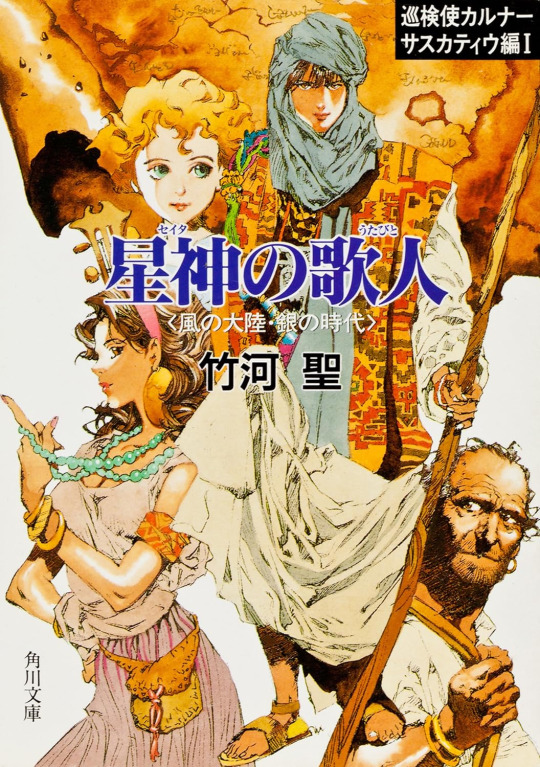
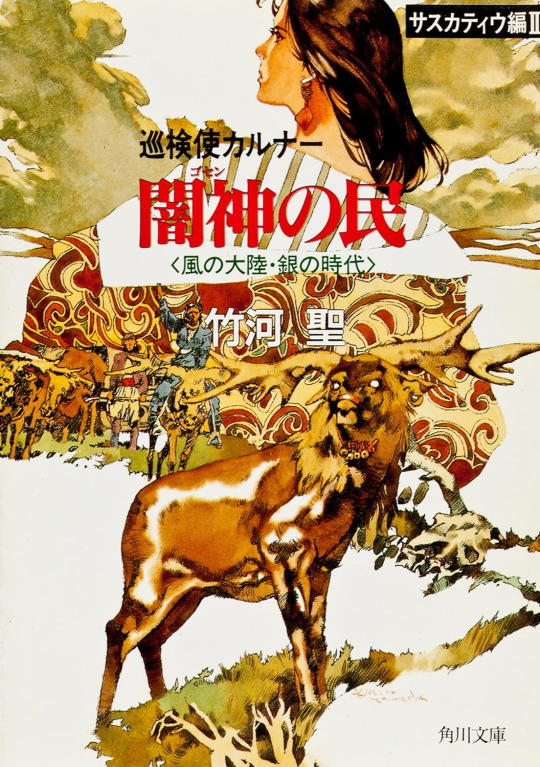

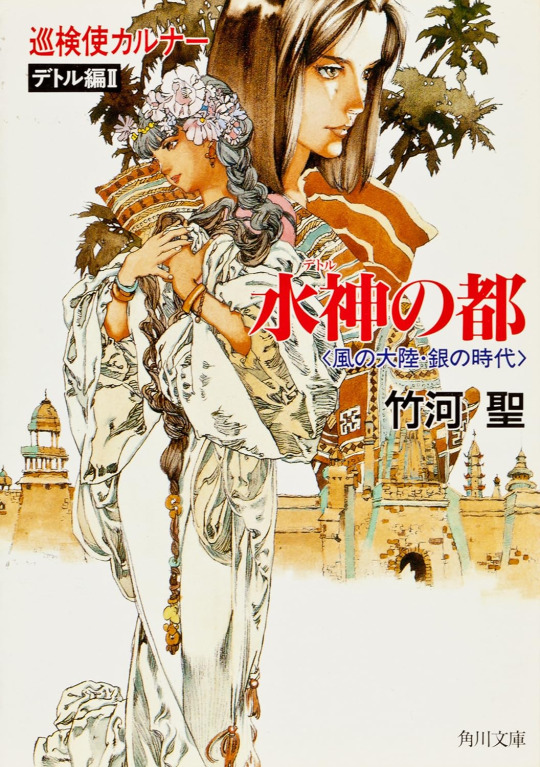

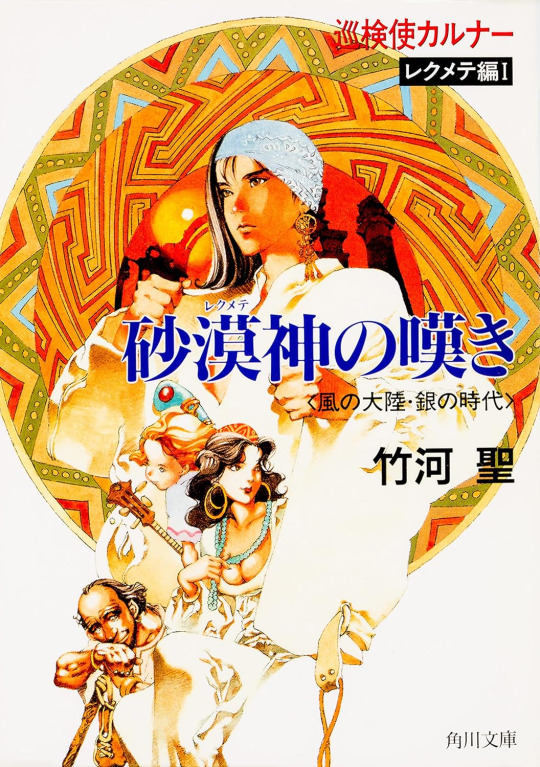


Junken-shi KARUNA[巡検使カルナー]: Inspection Tour Envoy Karuna
#manga covers#not manga#akihiro yamada#the shi[使] might actually refer to klesha#the buddhist concept#because the name Karuna[カルナー] might very well be#sanskrit Karuṇā[करुणा]
10 notes
·
View notes
Text
Lezet -"Meld 8" is out on MAHORKA RECORDS (Bulgaria)!!!

Lezet -"Meld 8" is out on MAHORKA RECORDS (Bulgaria)!!!
A decade after "Meld 7" I decided to continue the "Meld" series of albums where each track has been made in a collaboration with a different artist. With RDKPL, Wilfried Hanrath, Kleshas, Dj Odraz, Filmy Ghost, Humanfobia, Dolores Mondo Stash, Edo Žudjelovic, M.Nomized lending their talents, "Meld 8"seems to be just as interesting and amusing as any of its predecessors.
Thanks to all my friends who collaborated with me on MELD 8 and for making it as brilliant as it is!
https://mahorka.org/release/390
#lezet#serbia#experimental music#electronic music#experimental#bandcamp#collabs#collaborations#humanfobia#rdkpl#wilfried hanrath#kleshas#m.nomized#filmy ghost#dj odraz#dolores mondo stash#edo zudjelovic#albums#duos#mahorka#bulgaria#Bandcamp
2 notes
·
View notes
Text
shoutout to the japanese buddhist monk i saw smoking and gossiping with someone outside the food place we were going to eat at.
realest guy out there but also arent you like not supposed to do that. 2 whole kleshas
#klesha(煩悩) is like. earthly desires or passions#sort of like christian sin?? i guess??#im not an expert but hm🤔☝️#really funny tbh#- emil
2 notes
·
View notes
Video
youtube
Yoga Sutras: Devotional Feminine
#youtube#✅Yoga Sutras: Devotional Feminine 🙏🙏 Watch The Video & Don’t Forget to Like Comment Subscribe & Share 🧡 💠Notes ♡ 💠The kleshas (thing
0 notes
Text
Navigating the Kleshas: A Guide to Understanding and Overcoming Life's Inner Struggles
What keeps us limited and bound?
by Cristina Holtz Dec2023
In the realm of personal growth and mindfulness, understanding the concept of Kleshas can be transformative. Originating from ancient Eastern philosophy, Kleshas are mental states that cloud the mind and lead to suffering. Here’s a distilled guide to these profound concepts, tailored for the modern seeker of mindfulness and inner…

View On WordPress
0 notes
Text
The Veils of Maya
Navigating Illusion in the Quest for TruthThe labyrinthine nature of existence, adorned with its pleasures and pitfalls, has been a subject of deep contemplation for ages. At the heart of many philosophical inquiries in Hinduism lies the enigmatic concept of ‘Maya’. Far from being a mere illusion, Maya reveals layers of truth, each pointing towards an understanding of the universe and our place…

View On WordPress
#Advaita Vedanta#Avidya#brahman#Cosmic Dance#divine play#duality#Hindu philosophy#illusion#Karma#Kleshas#Leela#Maya#Prakriti#Rajas#Sattva#Self-Discovery#Shakti#Spiritual Journey#Tamas#Three Gunas#Transcendence#truth-seeking
0 notes
Photo

The Five Poisons.The way of cultivation the mind involves transforming the Five Poisons and the consciousness into wisdom.
0 notes
Text
So I haven't seen anyone mention the weapon that Yorozu created for Sukuna yet.

This is a pretty long post so I'm inserting a read more here.
We end up seeing it later, but we actually got a sneak peek earlier in one of the colored pages! The weapon she created for him is what he's holding in his left hand.

We see it when he wields it in his fight with Kashimo. It's translated as "Kamutoke" or supreme martial solution and is shown to have electric properties which proved to be useless against Kashimo:
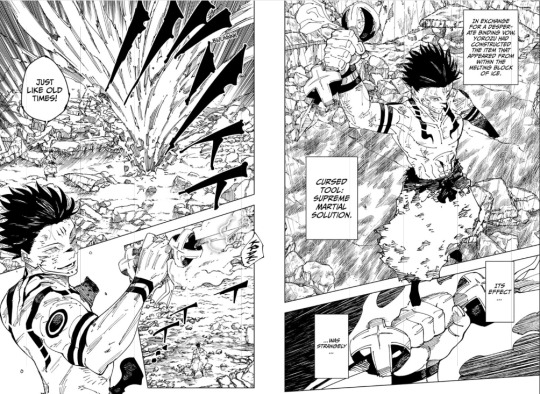
and it's also what he ends up losing in Higuruma's domain expansion:
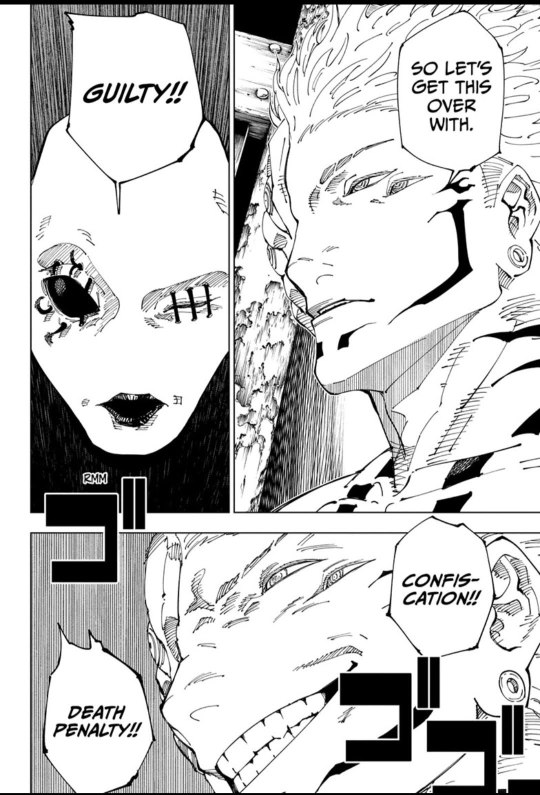
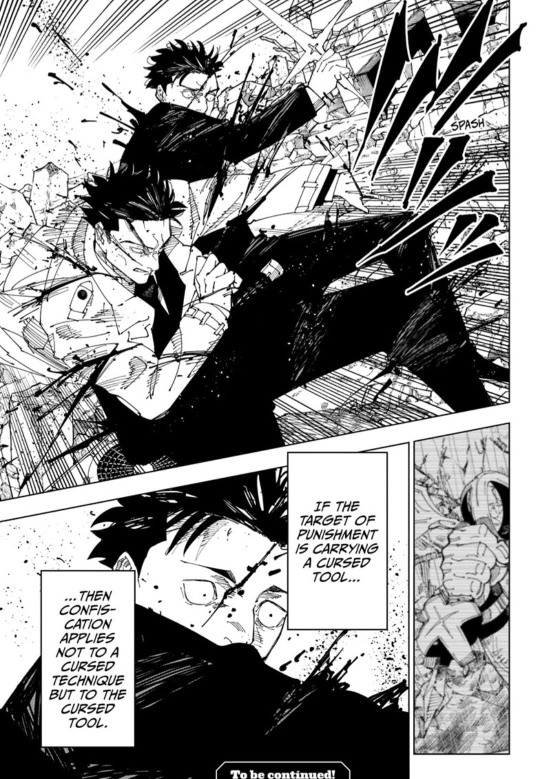

After a bit of researching I learned that this cursed tool looked VERY similar to a common Buddhist weapon called the Vajra:


And we know how much Gege likes using Buddhist symbolism throughout JJK, so this definitely isn't a coincidence. According to Brittanica, the "Vajra, in Sanskrit, has both the meanings of “thunderbolt” and “diamond.” Like the thunderbolt, the vajra cleaves through ignorance... Like the diamond, the vajra destroys but is itself indestructible and is thus likened to śūnya (the all-inclusive void)."
Other websites further explain the prongs of the Vajras as representing the Five Buddhas or five wisdoms and kleshas (causes of suffering). Each Buddha carries various associations linked to the wisdoms/kleshas, particularly: ignorance/delusion, envy/jealousy, selfishness/lust, pride/greed, and aggression/aversion, all of which are "poisons" on the path to enlightenment. (I'll make a separate post about this later).
BUT the Vajra is typically accompanied by a bell (also called a Ghanta).

Many sources explain that the combination/interaction of the two is what creates and represents an enlightened individual. The Vajra specifically represents "method" and the bell represents "wisdom" as well as emptiness.
The fact that the Vajra is representative of a thunderbolt further confirms that the weapon Sukuna wields is a nod to this, as we know it summons a thunderbolt that ends up being useless against Kashimo.
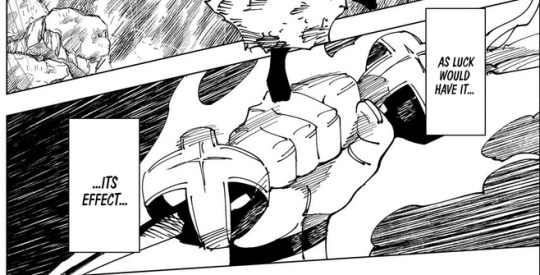

However, I think there's a couple things that are interesting:
The fact that the Vajra is also representative of diamond, destroying things while remaining indestructible and the fact that Higuruma's domain confiscated it; and
The fact that it's the combination/interaction of the Vajra and the bell that represent enlightenment and how we don't ever see Sukuna with a bell or anything indicative of one.
Beginning with my first point:
The Vajra is indestructible and represents the "method" of enlightenment, cleaving through ignorance to attain it.
Due to its indestructibility, I think it makes sense that the only way to get rid of it was through confiscation. But what was the point? Would the lightning bolts have really been enough to off Yuuji or the other characters? I feel like they would have been able to figure out a counter. Which is why I think Sukuna losing it played a more symbolic role.
Up until this point, Sukuna has never doubted himself or given much thought to anything but his desires. He's not fueled by emotions or ideals, but by his pleasures and whims. That is, until Higuruma dies.

It's after Higuruma's death that we see Sukuna, for the first time, lost in thought, reflecting on himself and others.

I think Higuruma's CT confiscating the Vajra was symbolic of him putting the first crack into Sukuna's enlightenment and understanding of himself. It's also interesting that it's Higuruma who does this, because when we first meet his character he's somewhat similar to Sukuna. After his mental break in the courtroom, he's chosen to live by his whims. He's in a bathtub because why not? It's what he felt like doing. And his assertion in the second panel about killing people who piss him off is an almost perfect parallel to Sukuna's.
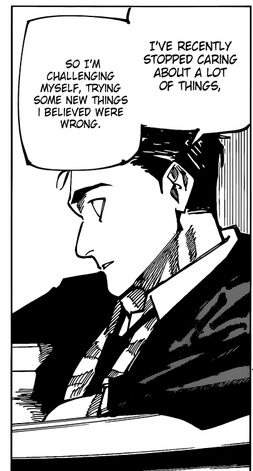

Ultimately though, Higuruma regrets the people he's killed and agrees to help everyone as a way to repent.

Higuruma taking the Vajra, especially as a sorcerer who intrigued Sukuna, was the only way they could have put that crack into Sukuna's enlightenment. I don't think it would have had the same effect if someone else got rid of it.
And that crack only grows wider as Sukuna continues to ponder.

Which ultimately leads him to the one he's consistently underestimated and ignored: Yuuji. This also leads us into the second point.
2. The Vajra is consistently depicted with a bell. So where is it?
As stated above, the Vajra only symbolizes method while the bell symbolizes wisdom and emptiness. Both are needed to represent/attain enlightenment. And one particular panel makes me think Yuuji might be symbolic of the "bell".
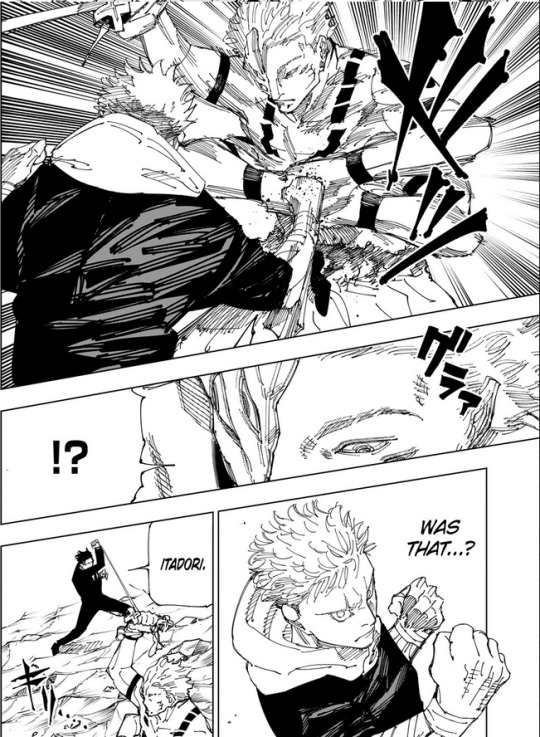
In chapter 244, we see Yuuji land a blow on Sukuna that makes it seem like he's almost vibrating, akin to the vibrations released from a bell being rung. We also know Yuuji has improved as a sorcerer given his use of RCT and that panel of him and Kusakabe training. He's also clearly done something to his arms, but we don't know what yet.
So how else could Yuuji symbolize wisdom and emptiness? One is the fact that he no longer houses Sukuna. It could be argued that Yuuji is empty now. Or it could also come from a more emotional aspect: Yuuji has faced tremendous loss and grief throughout the story. He not only lost his closest friends: Megumi and Nobara, but he also lost both of his mentors. He further had to witness the deaths of Junpei and hundreds of people in Shibuya. Based on what we've seen with Itadori's character development, I think describing him as having an emptiness or void inside of him would be apt.
The wisdom component comes in with his indomitable ideals. Similar to the Vajra, Yuuji possesses an unbreakable soul.
The story began with Yuuji wanting to give people a proper death and wanting to help people

And it holds true throughout the story. All Yuuji has ever done is try and save people. And despite his many failures, he persists.

It's the wisdom to keep your course and stay true to yourself, despite how many times you've been broken. And if there's anything I know about Yuuji's character, it's that that boy will get back up. So long as there's a person he could save, he'll continue to fight for them to have a proper death.
#sukuna#yuuji#megumi#higuruma#jjk#jujutsu kaisen#jjk meta#jjk analysis#posts#mine#this took me SO long to articulate#and i tried including links for things too#i'll make a part 2 about the 5 buddhas later
90 notes
·
View notes
Note
what do you do when you feel your faith is wavering
I let it waiver. I let myself feel awful. I let myself entertain the idea that everything I know is false. The hard truths i've felt in my bones, the love i've experienced, my memories of the divine, they are nothing. I forget for a moment, or for months, every wonderful spiritual thing that has happened, and let myself be engulfed by the idea that there is no God, there's nothing else, if there is a God he doesn't want to help me etc. It's so easy to fall prey to this thinking. Things like hopelessness, unfulfilled desires, envy, ignorance, infect our mind and lead us astray from what we truly believe. And this is okay.
Sometimes, i think we must let it fall away from us, like the tide. I love this quote that i believe is from the book 'Enthusiasm' by Swami Chidvilasananda.
"Do not worry, all paths lead to the ultimate source/ true self / God. Whatever you do, you can make it your sadhana/ spiritual practice. Some paths seems longer, some paths seems shorter than other. Even after wandering here and there, ultimately you would have to merge back to the ultimate source. Just like - regardless of how high a tide move up against the ocean, it has to merge back to the ocean."
Sometimes i think i let myself forget just because it feels so good to remember. But i want to live always in the light of whatever i believe, i want it beaming into my life and blessing my life, and in order to not fall prey to the kleshas, it just takes discipline.
21 notes
·
View notes
Text
P6 Idea : Jungles and World Trees
"Jungle" in P6 is equivalent to the palace in P5. It is an obstacle that players must pass to advance the main plot, and it is also a turning point for adding new companions. The concept of "jungle" corresponds to the saying "concrete jungle = city". Each jungle is the product of human collective subconsciousness, corresponding to the Kleshas and Three Poisons of Buddhism respectively.
Jungle of Mirrors
This is the jungle created by "Delusion (Moha)", rooted in the subconscious of young people who feel confused during adolescence, and the sport girl breaks in to save her club members. When players go deep into the jungle, they also have to rescue people trapped in the mirror. The boss of Jungle of Mirrors is named "Jabberwocky of Moha". It will temporarily disappear like a chameleon. At this time, players cannot damage it with weapons or physical attacks. Only by using skills can they force it to appear. In addition, it will summon Bandersnatch and Jubjub Bird to serve as its thugs. After Jabberwocky is defeated, it will laugh at the protagonist's futility before leading to death, because if you want to solve the problem, you must catch the mastermind behind it, otherwise this lost world will be filled with many subconscious monsters like it.
Jungle of Webs
This is the jungle created by "Hate (Dvesha)", inspired by the use of cyberbullying by prejudiced people, with spider web elements that also correspond to the computer "web". The advisor boy came here to rescue the navigator boy. As long as he joins his companions, he can rescue people trapped in spider silk.The boss of Jungle of Webs is named "Yatsukahagi of Dvesha". Players cannot directly attack its body and must break its eight legs one by one. In addition, this big spider will spin silk and give birth to spiderlings to hinder players. After Yatsukahagi is defeated, the people of Ragnarok will forcibly take the navigator boy away. From this time on, players must be mentally prepared to confront Ragnarok.
Jianmu the World Tree
Jianmu is not a jungle, but the World Tree in Chinese mythology. There are obvious differences between the World Tree and the Jungle. The World Tree is an indispensable part of Ophion like Dragon Veins, and the Jungle is produced by people's twisted subconscious and must be eradicated. Therefore, every time the player defeats a jungle boss, the jungle will follow the boss. disappeared together, but the World Tree did not. In addition to the previous statement, Jianmu is basically not much different from Separate Shangri-La. Players will still face Baize and Ragnarok.
Jungle of Birdcages
This is the jungle created by "Conceit (Mana)", which is caused by the comparison mentality between companies and people involved in consortiums. Except for replacing the air battleship with a birdcage and avoiding fights with masculine boy, the overall structure of this jungle will not be too different from Clipper of Clouds. The boss of Jungle of Birdcages is named "Vucub Caquix of Mana". Because this big bird can fly in the sky, players can only use firearms to damage its two wings before shooting it down. After Vucub Caquix falls to the ground, it will attack the player with its claws and beak. In addition, it will put its companions in a birdcage as hostages. The player must destroy the bird cage to release the companions.
Yggdrasil the World Tree
Once the player comes to the World Tree in Norse mythology, the plot will take a very obvious turn. In addition, the Ragnarok, which is opposed to the protagonist, has full home field advantage here. Yggdrasil will faithfully represent concepts from Norse mythology, for example, the guard shadows here will transform into the appearance of Norse gods.
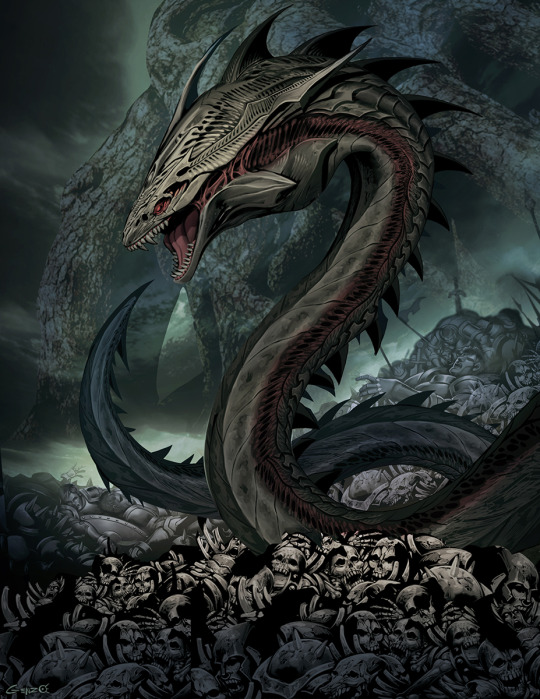
The boss here is "Nidhogg of Raga", which is caused by people's overexploitation of nature and excessive abuse of substances. In order to prevent Nidhogg from eating the roots of this world tree, players must try to avoid damaging the roots when attacking this big worm. Nidhogg will burrow into the ground to avoid physical damage, and players must use skills to blast it out. After Nidhogg emerges from the ground, it will forcefully swallow its companions. Players must climb on its head and attack its vitals to rescue its companions.
Jungle of Witches
After the problem of Yggdrasil is solved, players will have to develop several different endings from now on. At this time, the level of community improvement of players and partners must be taken into consideration to affect the development of the ending. The first is Amalthea, she will be the most important key to the ending. If her community is raised to full, she will tell us the truth when she first enters Jungle of Witches, and will continue to accompany players to fight against the mastermind behind the scenes.
Instead, once her community is not full, she enters Jungle of Witches to fight the player, leading to a bad ending where the protagonist and Amalthea are buried in the jungle. In other words, Amalthea is the boss of Jungle of Witches. Her confusion and low self-esteem about her identity make her the only exception among the subconscious monsters, which is "Doubt (Vicikitsa)". The guard shadows here will transform into the appearance of famous demons in monotheistic religions.
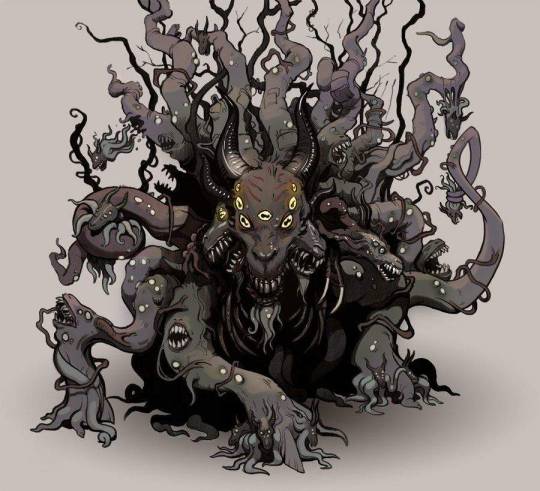
In the boss battle, she will fight the player under the name "Amalthea of Vicikitsa", and her persona will change from three bugs to Heidrun. This persona will release milk to hinder the player, and the player must use skills to prevent it. After defeating Amalthea, you will enter the next round of battle. The dying Amalthea will immediately transform into "Shub-Niggurath the Elder Mother", which releases several "Spawns of The Black Goat" to serve as thugs. In addition, Shub-Niggurath will spawn previous bosses to fight players, including Jabberwocky, Yatsukahagi, Vucub Caquix and Nidhogg.
Irkalla and Primordial Sea
Once you avoid the bad ending, you'll end up here, where the mastermind (final boss) lives. Irkalla is part of the Primordial Sea, and different ending developments will still be distinguished here, but I have to give a hint and I will explain the details later.
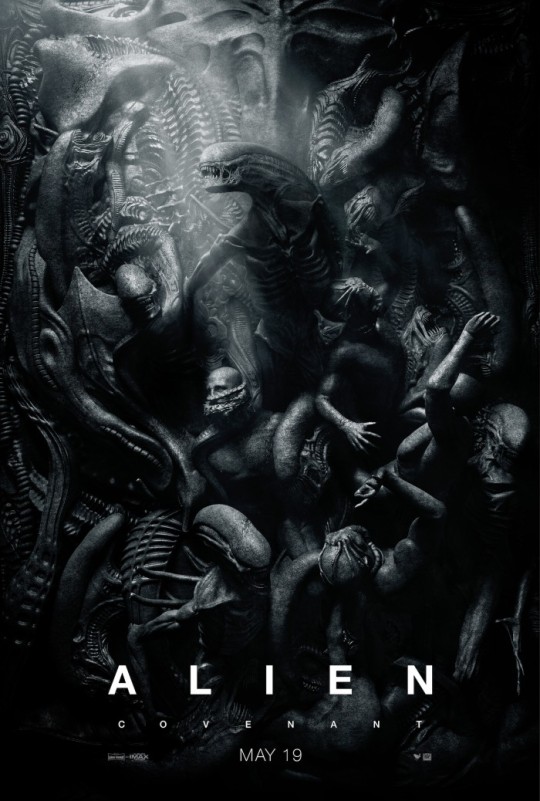
Once players enter the interior of the Primordial Sea, it is full of organic and body horror style, and the guard shadows will become representative gods from Middle Eastern mythology.

After going deep into the base of the mastermind behind the scenes, the final boss here is Nammu. She is actually the shadow of Gaia's consciousness, just like Ophion is the persona of Gaia's consciousness. Nammu looks like an innocent girl, but in fact her nature is full of pathology and distortion, which also highlights the result of her distortion of maternal nature. The reason for her distortion is the Gaia consciousness caused by the destruction of the natural environment by humans, which has caused everything to be imbalanced. And Nammu is the side (shadow) that Gaia doesn't want to face.
After defeating Nammu, she will transform into the huge "Tiamat the Chaotic Mother" before she dies. This monster, which is like a fusion of aliens and human deformities, will derive tentacles with the appearance of Cambrian creatures on its body to fight. The names of these tentacles are Musmahhu, Basmu, Usumgallu, Ugallu, Uridimmu, Girtablullu, Umu-dabrutu, Kulullu and Lahmu.
I will stop here first, and I will find time to explain the detailed truth later, so stay tuned!
14 notes
·
View notes
Text

My personal prayer beads
Mala:
Used in the context of Buddhism, a mala is a loop of prayer beads used for counting and keeping track of prayers/recitations when performing japa (meditative repetition of a mantra, sacred sound, or a divine name/epithet).
A mala consists of 108 beads. Often, factors of 108 such as 54, 27, 18 exist on the mala as well. A 109th "guru bead", not used for/included in prayer counting, is also very common.
The origin of the mala is actually unknown, which gives you an idea of just how old the religions that use it are. As far as my native land is concerned, there are no references to the use of malas in Chinese literature before the introduction of Buddhism during the Han dynasty. Historians can only theorize that the practice may have spread from India to China at that point in time.
Why 108 beads? There are lots of theories on this one, but the number itself has remained consistent. The number 108 holds religious significance in ancient Indian religions (including Buddhism). Traditional Buddhists believe that humans come with 108 afflictions or kleshas (mortal mental states that cloud the mind and manifest in unwholesome human actions). 108 is also the number of possible dharmas. In some Buddhist traditions, the 109th guru bead represents Amitabha Buddha or the bodhisattva Avalokitesvara (the East Asian depiction/counterpart/equivalent of whom is Guanyin) who has 108 avatars.
Rosary:
The rosary ("crown of roses" or "garland of roses") is a string of prayer beads used primarily in Catholicism. The Rosary prayer, which the rosary beads are used for, is arranged in sets of 10 Hail Marys, referred to as "decades". Each decade is preceded by 1 Lord's Prayer and followed by 1 Glory Be. The rosary beads are used for saying these prayers in their proper sequence and tracking their numbers.
Traditionally, 5 decades are recited in 1 session, and each decade recalls and meditates on 1 of the Mysteries of the Rosary (events in the lives of Jesus Christ and his mother the Virgin Mary).
A litte bit about the Mysteries of the Rosary: In the 16th century, Pope Pius V established 15 Mysteries, and these Mysteries are grouped into 3 sets with 5 Mysteries in each set (the Joyful Mysteries, the Sorrowful Mysteries, the Glorious Mysteries). Then in 2002, Pope John Paul II added a new set of 5 Mysteries, called the Luminous Mysteries. Now we have a total number of 20 Mysteries divided into 4 equal sets. The mysteries are recommended to be prayed on specific days of the week.
The exact origin of the rosary is subject to debate among scholars. The use of knotted prayer ropes in Christianity goes back to the Desert Fathers in the 3rd and early 4th centuries. The practice of meditation while praying "Hail Mary" goes back to Dominic of Prussia, a 15th-century Carthusian monk, and he called the practice "Life of Jesus Rosary" (vita Christi Rosarium). Then in 1977, Andreas Heinz, a theologian from Trier, discovered a vita Christi rosary that's thought to date all the way back to 1300. Pious tradition legend has it, the idea of the Rosary was given to Dominic of Osma by an apparition of the Virgin Mary in 1214 in the church of Prouille, and this apparition received the title of Our Lady of the Rosary.
48 notes
·
View notes
Text
Speculating What the 16-Registered Special Grade Curses Are
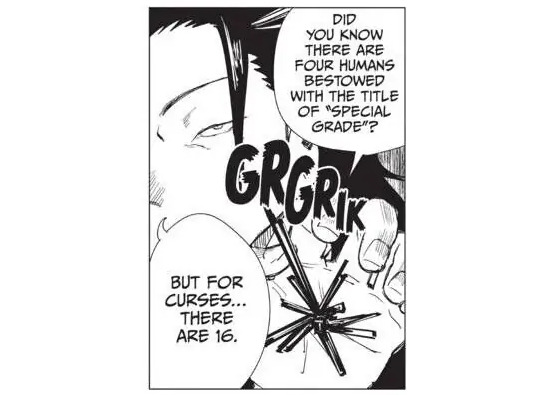
Geto mentions that there are 16-Registered Special Grade Curses, but we only ever got to see four! In all of Jujutsu Kaisen!! I want to know what they are at least, so here's a few speculations.
First, the ones we know.
Tamamo-no-Mae Incarnate, an Imaginary Vengeful Spirit based off of Tamamo-no-Mae.
Ah, a quick explanation of Imaginary Vengeful Sprits: They're Curses built off the cumulative fear humans share over a specific figure, like a famous yokai or ghost story. Kuchisake-onna is one... But so is Sukuna. Ryomen Sukuna is the "Imaginary Demon" with two faces and four arms, but he was actually a human who existed. So, I guess this means he was changed due to people's fears of him? This kind of makes sense when you consider that the Three Great Families are also decedents of the Three Great Vengeful Spirits. I mean... those are Curses too. Actually, we can probably count all of them as among the 16-Registered Special Grades now that I think about it.
Wow, what a fruitful tangent. Let's get back to it, shall we?
1. The legend of Tamamo-no-Mae is that she was a fox spirit under the guise of a courtesan under Emperor Konoe (who reigned from 1142-1155, Heian period). The same beautiful fox spirit who led to numerous rulers getting seduced into being terrible rulers throughout history. Because of course she was.
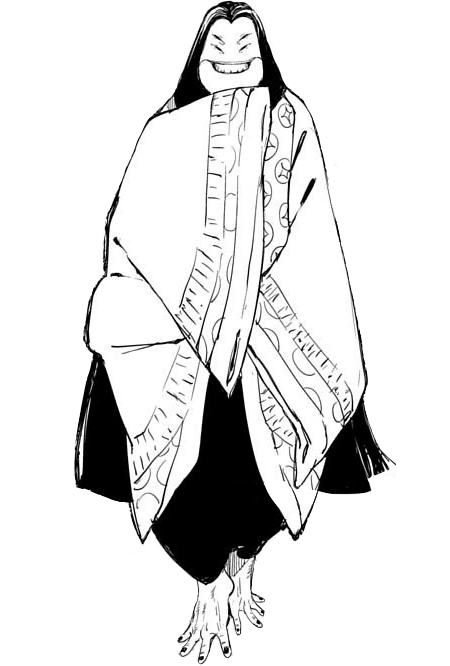

2. The Smallpox hag is a Disease Curse. Kenjaku lied about it being a deity, (src: Vol. 20 extra) but I assume it's still a Special Grade since it can use Domain Expansion. Disease Curses are born from the fear of a disease such as the plague. The way Akutami depicts something on it's stomach like it's distended is notable. I did find Sopona, the god of smallpox in the Yoruba religion, which might've been used as a reference point.
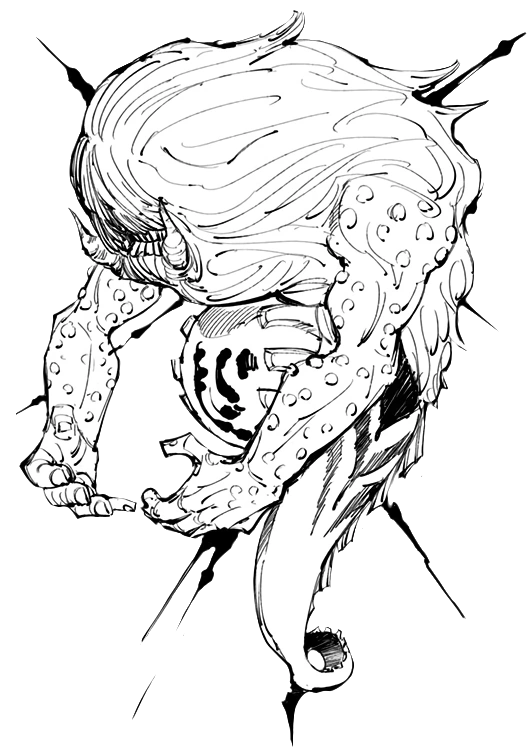
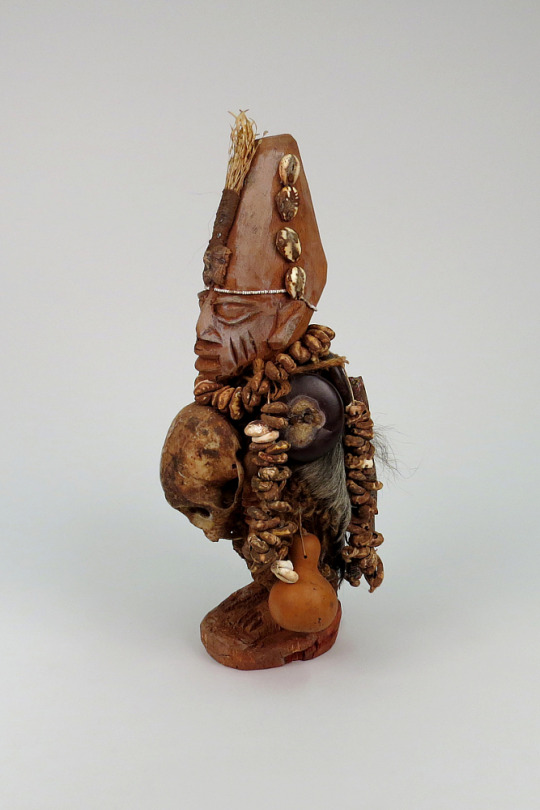
3. Kurourushi was a Registered Special Grade from Kenjaku's (I suppose Geto's?) collection of Curse Spirits he released for the Culling Game. A cockroach curse... At this point, I think it's safe to call it a Devil from Chainsaw Man.
I actually suffered through researching cockroaches a little for this list to see if anything caught my eye. It wasn't worth it. lol. There is a neat article about cockroaches in pop culture you can read to your heart's content if you like. Obviously, swarms of cockroaches attacking people are a common enough trope. Honestly, I'm also reminded of the beetles from The Mummy, only more disgusting.
It's definitely totally irrelevant, but Metamorphosis by Franz Kafka, which is listed on that page, is about a man who turned into a giant beetle-like creature (usually thought to be a roach). I only bring it up because Mahito briefly discusses it in the first light novel.
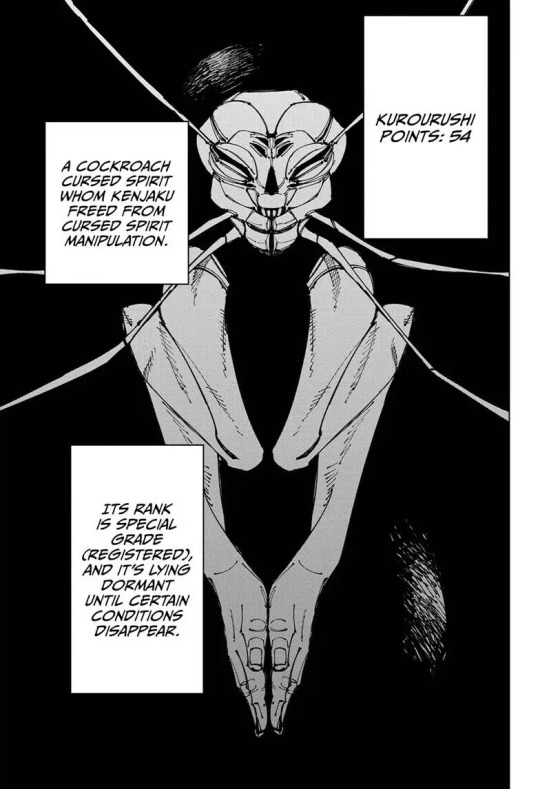
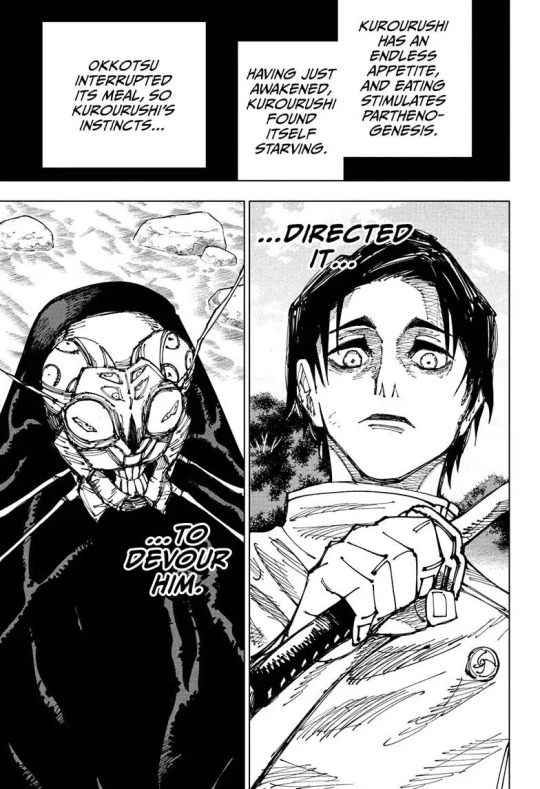
4. An Asian God Curse not from Japan. Maybe Genesha, but more probably Kangetian, the Japanese equivalent. Kangetian has both positive and negative reception in Japan and has some Curse-like descriptions. Whereas Genesha seems like a benevolent figure... But Genesha is the one consistently depicted as pink with four arms... Y'know what, Curses are an amalgamation of human negativity anyway, I shouldn't stress about it.
From the Kangetian wiki article:
the Buddhist Vinayaka was (at least at first) negatively portrayed as the creator of obstacles and the leader of a class of malignant demons who obstructed Buddhist practice called vinayakas [...]
And there's this:
On the other hand, he is considered to be still bound by base passions and desires (kleshas) and thus is sometimes also regarded as a rather volatile, demanding god who is quick to punish those who have offended him.
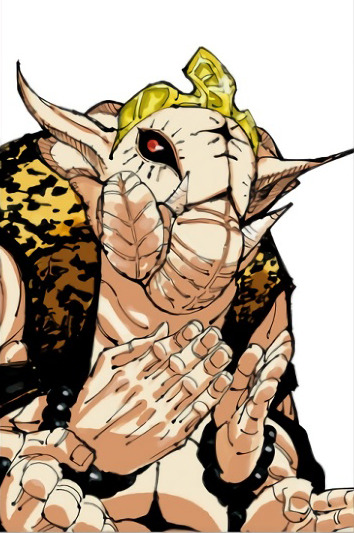
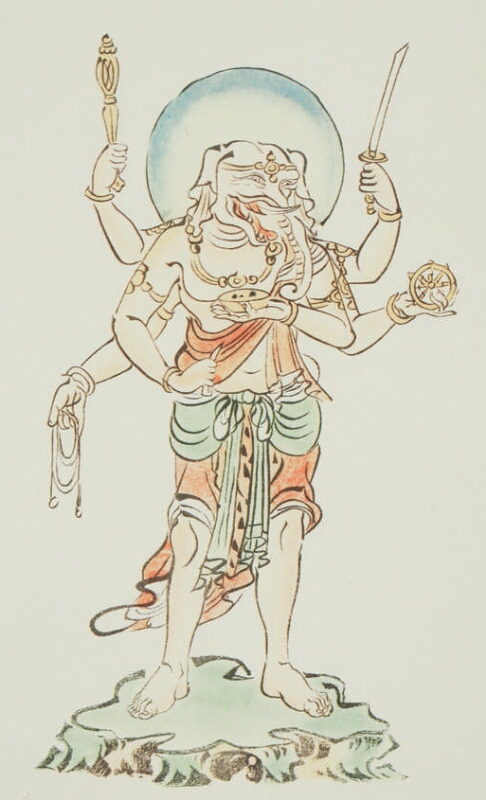
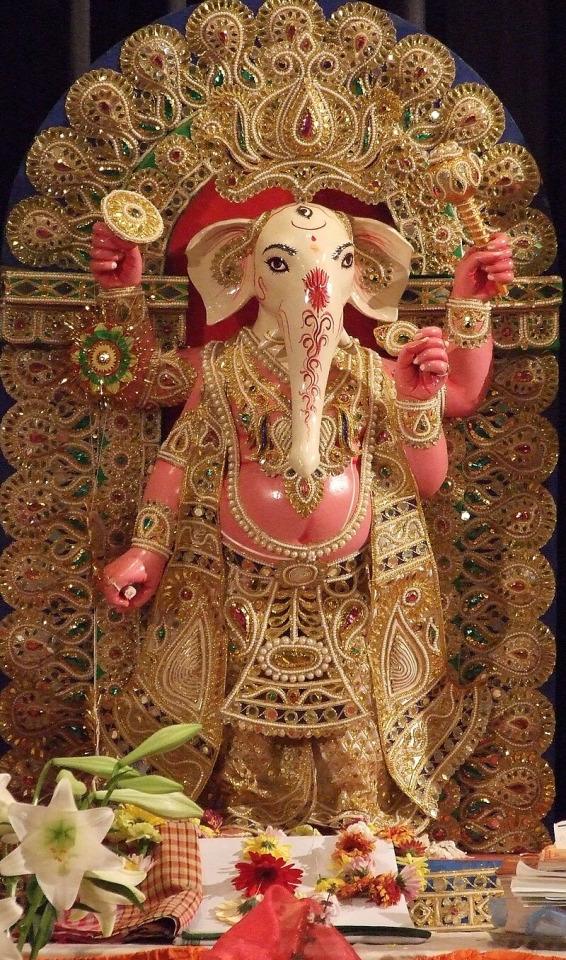
The ones that are most likely part of the registered Curses.
The Three Great Vengeful Spirits, ancestors of the Three Great Families. There's no way they're actually around anymore, but this is just about being a "registered" Special Grade, so they had to have counted, right?
I'll try to be brief here, because somehow, this post has already ended up three times longer than I'd intended. (*edit: It did not end up brief.)
5. Sugawara no Michizane came from a middle-class family of scholars. He was considered a child prodigy, a genius, and held the second highest rank in the imperial court, right under the emperor. As you can imagine, he was the target of jealousy from other aristocrats. He was falsely accused of trying to abolish the emperor and died two years later in exile. (His greatest rivals were the Fujiwara btw, which is ironic considering what Uro thought Yuta was.)
After he died, everyone thought his enemies would continue to dominate the court. AND YET, a whole lot of them started to up and die from "accidents," illnesses, etc. ALSO, lightning repeatedly struck the imperial court and even more of his enemies died. The imperial city experienced weeks of rainstorms and floods. Anyway, everyone decided they needed to pacify what was clearly Michizane's vengeful spirit, built him a temple, and deified him as Tenjin. (Like "Raijin," god of thunder. Lol.)


6. Taira no Masakado was a samurai who's notable for leading the first recorded rebellion against the imperial court in Kyoto. Masakado worked for a powerful noble in the capital but returned to the east after his father's death. He ended up as a kind of "hero of the people" and declared himself the "new emperor" with half of Japan's land. Which, uh, obviously wouldn't fly with the imperial court. He died two months later in battle and his head was sent to Kyoto and displayed for the people to see.
But there were some strange rumors about that head... Its eyes stayed opened for months... You could hear it grinding its teeth at night... Most bizarrely, legend says the head flew back east to look for its body. Specifically, to the head mound in what would become one of the most expensive pieces of land in Tokyo's financial district.
Anyone who tries taking down the mound is faced with bad luck (including death), so it's well maintained to this day.


7. Emperor Sutoku was a puppet emperor from the age of 3 to 22; under the control of his father. After he was forced to abdicate, failed a rebellion, and forced into exile, he became a monk. Devoting himself to Buddhism, he copied scriptures and asked the court to have them sent to a temple in Kyoto, but the court sent them back claiming they were cursed. (Yeah, I know.)
Sutoku swore to become a yokai to avenge his grudge. After that, he never cut his hair or nails again. By the time he died, he looked like a demon.
Everything from the subsequent fall in fortune of the Imperial court, the rise of the samurai powers, droughts and internal unrests were blamed on his haunting.

(I found this neat series of articles about each of the Three Vengeful Spirits after typing this out, which go into them a little more: Taira no Masakado, Emperor Sutoko, Sugawara no Michizane)
8. Ryomen Sukuna needs no introduction. I will add this quote, though.
Q: It's mentioned that Sukuna was a human who actually existed, but was he a curse user when he was alive?
Akutami: You could say he was a curse user, but I think he was closer to a natural disaster.

9. Rika-chan was definitely a Special Grade. And once she was discovered, she had to have been registered as the "Queen of Curses." The question is whether Geto counted her among the 16?
Tangentially, these are my own thoughts, but human Rika... Well, reading her character profile from Volume 0 and seeing her looks-- her long dark hair, the mole on her face-- reminds me of another certain malevolent curse-like girl: The eponymous Tomie from Tomie by Junji Ito. And considering we get an Uzumaki reference later in Volume 0, I don't think it's entirely a coincidence.



That's 9 out of the 16, so actually, we knew more of the Registered Special Curses then I thought. (Speculative though it may be?)
Finally, onto the reason I made this post in the first place.
☆ Because I was one of those children that ate up supernatural mysteries and fairytales, I really liked the legend of Yuki-onna. Something about the imagery... A beautiful woman in the mountain snow leading men to their deaths... Is super poetic. Lol.
☆ Sadako from Ring. She's so ubiquitous by this point, how could there not be an Imaginary Cursed Spirit based off her? The first Ring movie came out in 2001, and before that it was a novel series. Quick summary, this should be familiar to you: Sadako is a ghost who made a cursed video tape. Whoever watches the tape will die in seven days.
Notably, Sadako is a mix of two ghosts, Oiwa and Okiku. There's also Kayako from The Grudge. I can see all of them mixing together into a Special Grade.

☆ Since Mahito mentioned the nine-tailed fox (kyuubi), it would feel remiss not to mention it. Different from Tamamo-no-Mae, this one takes the more animalistic form.
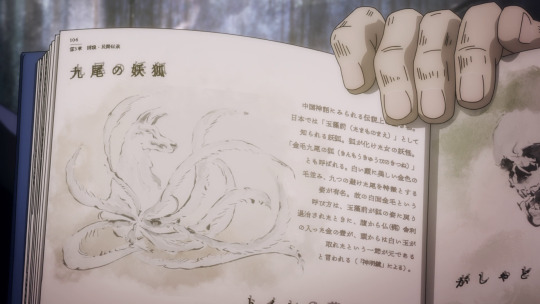
☆ Genuinely terrifying would be an atomic bomb Curse. It would look balding and gaunt... It would have radiation related powers. It would be awful.
☆ I know the Darkness Devil is a thing in Chainsaw, but considering "the dark" is one of the most fundamental fears of the human race, I'm going to say that makes sense.
☆ A "white devil"/gaijin Edo period era Curse that stems from Japan's xenophobia, especially at the time. I imagine a lot of like, Christian imagery with it. Think Eva. Lol.

A few more...
Not even Kuchisake-onna was a Special Grade... It could do Simple Domain though, so it was probably a Grade 1 Curse at least. Here are a few more ideas that could be, at least, Grade 1 in my book.
★ Kisaragi Station is just my love for that urban legend. Hey, if oceans, forests, and volcanoes can become Curses, then so can imaginary train stations! Trains are also the way so much of travel is done in Japan, I legit think this could be a possible Curse. Kisaragi Station originated from a 2ch post in 2004. A woman asks 2ch for advice when the train she usually takes home doesn't stop... until it reaches "Kisaragi Station," anyway. There was a Mob Psycho OVA with a similar idea, where Reigan was basically trapped in a Domain, now that I think of it. Hahaha.
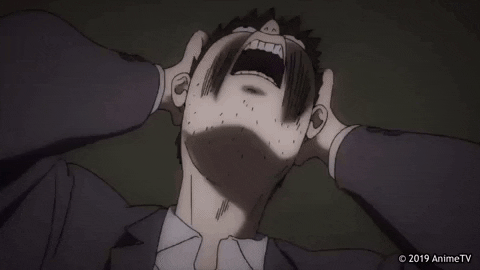
★ Hanako-san of the Toilet was also mentioned by Mahito. And frankly, not just in Japan, but around the world, the bathroom is a place of hauntings. Here's a really great video that talks about the fear of bathrooms in media that I recommend. And here's a post I wrote a few years ago about an episode of Shin-chan that made me apprehensive of dark bathrooms as a child. Lol.
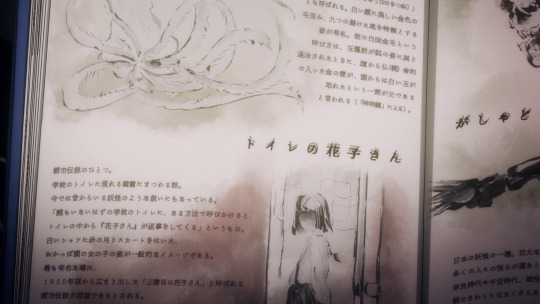
Ideas for Curses from other countries
Like Kangetian, here are a few foreign figures too. I tried to keep in mind they should be of things people felt genuine fear or hatred towards. Obviously, each culture has a great many folklore and urban legends, so I'm only listing famous ones I personally knew of.
Jack the Ripper was a real-life English serial killer, but he's risen up into something of a mythical status. There are so many fictitious takes on him, in the world of Jujutsu Kaisen I'd be shocked if he hadn't become an Imaginary Cursed Spirit.
Baba Yaga, a Slavic cannibalistic witchy figure whose preference was children. Though this story is German, think the witch from "Hansel and Gretel." There were a lot of time periods of famine in that region of the world, so I can see starvation, the desperation to eat something, leading to that widespread grotesque fear.
Bloody Mary, I think of her as American, but there's rumors that she's based off of a European woman. I'm reading the wikipedia article right now, and boy is the ritual a lot more complicated and meaningful than it actually is. Basically, you just say "Bloody Mary, Bloody Mary, Bloody Mary"; repeating her name three times, in front of a bathroom mirror and she appears. Uh, I don't think there was a reason for it. It was just spooky thing to do. Speaking of reasons to be scared of dark bathrooms... I remember trying to call out to Bloody Mary as a child at a friend's house. I cannot for the life of me remember if I chickened out or not. Probably.
youtube
La Llorona, "the Weeping Woman," of Mexican origin. She haunts areas around bodies of water looking for her children, who she drowned in life during a jealous rage when she discovered her husband cheating on her... Another female phantasm. I suppose, women are so often wronged in life, it's easy to imagine them haunting us after death. As a Curse, I can see her springing up mostly due to the guilty feelings of men who have cheated.
Why did I do this to myself? As soon as I started writing up Tamamo-no-Mae I went on a tangent (as you can see) and I spiraled. OTL Whatever, I like myths and lore and it was fun even if this ended up... so much longer than I'd expected.
#jujutsu kaisen#my jjk#jjkdaily#jjk meta#jjk manga#jjk spoilers#let's try to be more bloggy shall we#long post#jfc
35 notes
·
View notes
Text
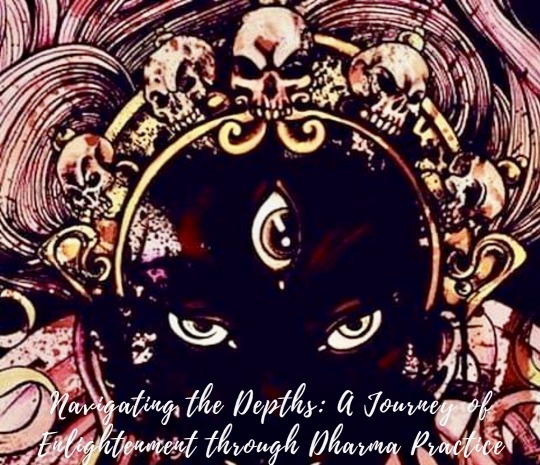
Navigating the Depths: A Journey of Enlightenment through Dharma Practice
In the profound words of Gautama Buddha, embarking on the Noble Path is akin to entering a dark room with a light in hand, dispelling the darkness within our minds and illuminating our true nature. Whether traversing the Mahayana or Vajrayana paths, practitioners delve deep into the recesses of their consciousness to purify and clarify their inherent essence.
The practice becomes a transformative journey, a process of confronting patterns etched across countless lifetimes. Unlike non-practitioners who may resort to numbing mechanisms or life coaching, Dharma practitioners navigate the intricate terrain of their minds, unveiling layers of darkness.
The wisdom of focusing on a singular practice becomes apparent as it allows for a concentrated excavation of one's internal landscape. Jumping from one practice to another risks digging into different levels of the mind simultaneously, hindering the ability to effectively address emerging challenges.
Tibetan Medicine offers a unique approach to Dharma practice, emphasizing:
1. Resting in True Nature:
Acknowledging and reconnecting with the fundamental, unaltered essence within.
2. Acceptance of Afflictions:
When faced with emotions like anger or greed, practitioners are encouraged to accept rather than push away.
3. Observation of Kleshas:
Delving into the causes of afflictions, practitioners observe the triggers and the underlying energy—be it hot or cold—ultimately recognizing the emptiness inherent in these emotions.
4. Resting Breath:
Taking refuge in the breath, practitioners deepen their understanding of the patterns that trigger afflictions, leading to the discovery of their root causes.
Each klesha, or affliction, is seen as having a distinct cause, and the practice involves unraveling these causes to address the patterns that sustain them. By doing so, practitioners gain insight into the triggers of afflictions and learn to interrupt the cycle, ultimately fostering a state of equilibrium and clarity.
In the journey of enlightenment, the Dharma practitioner becomes a diligent excavator of their own consciousness, navigating the intricacies of the mind to uncover and transform patterns, ultimately embracing the light that dispels the darkness within.
11 notes
·
View notes
Text
A Short Introduction to the Yoga Sutras

The Yoga Sutras are generally considered a foundational text of the yoga tradition. In this article we examine the context and background of the text, briefly explore its structure and content, and I also offer some reflections on the text’s relevance in modern times.
Note: I have decided not to use diacritics in this article. Diacritics are those little lines and dots above and below letters that tell you how to pronounce Sanskrit words. Normally I use diacritics in my writing, as they are essential for pronouncing Sanskrit correctly. However as this article is meant for non-scholars I have decided it would be better to try and write the Sanskrit words in a way that will make them easy to read and pronounce, so as not to put anybody off!
History & Context
Most scholars these days date the Yoga Sutras to somewhere between the 2nd and 5th centuries CE, with Philipp Maas placing it in the early 5th century.
The text is attributed to a sage named Patanjali. Biographically, we know next to nothing about Patanjali. The name is a compound word formed from the Sanskrit words pata (falling, flying) and anjali (the gesture of joining the hands together in reverence).
Yoga had already been around in some form or another for many centuries by this point. Therefore, Patanjali did not ‘invent’ Yoga. Nevertheless, this is the earliest comprehensive and systematic text on the subject that has survived.
Yoga was just one darshana or school out of many in ancient India. In terms of philosophy, it shares many similarities with the Samkhya school. But whereas Samkhya tends to emphasise the use of reason and knowledge to gain liberation, Yoga emphasises practical and experiential methods.
Philosophically, both the Samkhya and Yoga schools teach a form of dualism. This is a dualism between purusha (our true Self) and prakriti (everything else, including the body and mind) and the whole point of Samkhya and Yoga in a nutshell is to guide us towards the realisation of purusha, that is, our true Self. This is true liberation or moksha in Yoga.
Most of the ancient darshanas had their own sutra text. Sutra texts are known for their brevity. Basically, sutra texts are where the most essential teachings of a school are distilled into as few words as possible. Knowledge systems were handed down orally in ancient India and thus source material was kept minimal with a view to facilitating memorisation.
Other authors would then come along and write longer commentaries on these sutra texts. The Yoga Sutras have a rich commentarial tradition spanning many centuries. The first and most well known is the bhasya commentary by a certain Vyasa. Vyasa actually means something like ‘compiler’ or ‘editor’ so that probably wasn’t his actual name!
Some scholars even argue that Patanjali and Vyasa are actually one and the same person, though others would strongly disagree with this thesis. Either way, this commentary is indispensable when it comes to making sense of the sutras, and published versions of the Yoga Sutras tend to include the bhasya commentary or at least reference it.
As a final note, many scholars now use the term pātañjalayogaśāstra to refer to this text as a whole (sutras plus commentary), because that is the name our oldest existing manuscripts use. But to keep things simple we will continue to use the name Yoga Sutras!

Structure of the Text
The Yoga Sutras are divided into the following four padas or chapters:
Samadhi Pada: This is where Patanjali defines Yoga and then describes the nature and the means to samadhi, the goal of Yoga.
Sadhana Pada: Sadhana is the Sanskrit word for practice or discipline. Here the author outlines two forms of Yoga, the kriya yoga (yoga of action) and the ashtanga yoga (the yoga of eight auxiliaries or limbs). This is also where Patanjali discusses the kleshas, five ‘afflictions’ or impediments to Yoga.
Vibhuti Pada: Vibhuti is the Sanskrit word for power or manifestation. Supra-normal powers (siddhis) are said to be acquired by the practice of Yoga. However, the temptation of these powers should be avoided and the attention should ultimately be fixed only on liberation.
Kaivalya Pada: Kaivalya literally means isolation. This is the chapter on final liberation. The Kaivalya Pada describes the process of liberation, it explains how the mind is constructed and veils the inner light of the Self.

The Goal of Yoga
Not one for a lengthy preamble, Patanjali gets stuck right in there and clearly states the goal of Yoga in the well-known second sutra:
yogas chitta-vritti-nirodhah YS 1.2
Any Sanskrit sentence allows for a number of possible translations and this one is no different. A nice and accurate one is this one from Barbara Stoler Miller:
Yoga is the cessation of the turnings of thought
The reason I say this one is accurate is because a literal meaning of vritti is ‘turning’. Ever felt that thoughts are ‘going round and round’ in your head? Well this phrase nicely captures that! The vrittis in this statement refer to thoughts, emotions, ideas and basically any cognitive act of the mind. Patanjali lists five types of vrittis. These are, once translated:
Right knowledge
Error or false knowledge
Imagination
Sleep &
Memory
All such activities of the mind are products of prakriti and are completely distinct from the true Self, purusha, that pure awareness or consciousness which we are aiming to enter into through Yoga. The means prescribed by Patanjali in the first chapter of the Yoga Sutras to still the vritti states of mind are sustained practice (abhyasa) and dispassion (vairagya).
Specifically the practice offered is meditation, or keeping the mind fixed on any particular object of choice without distraction. Patanjali then describes a number of possible forms such meditation could take. By stilling all thought, meditation removes all objects of awareness. Awareness can therefore now be aware only of itself, of its own source, the true Self or purusha. This state is known as samadhi in Yoga and Patanjali makes it super clear that this state of samadhi is the goal of Yoga and thus the whole text is focused upon achievement of that goal.

Obstacles to Yoga
Patanjali mentions five kleshas, which can be translated as impediments or obstacles to achieving samadhi and thus Yoga. These five are as follows:
Ignorance
Ego
Desire
Aversion
Clinging
In the Yoga Sutras, and indeed in ancient Indian philosophy in general, the first item in any list is the most important and fundamental. It’s the same here. Ignorance here means failing to recognise our true Self or purusha and instead identifying ourselves with our body, mind and the material world. All of the other obstacles arise from this fundamental error.

Yoga Psychology
Like most other schools of Indian thought, the Yoga school believed in the related concepts of karma and rebirth. According to this doctrine, we are caught in an endless cycle of rebirths called samsara and the purpose of following a path such as Jainism, Buddhism or Yoga is to bring an end to this cycle. Where the Yoga Sutras really shine are in interpreting this doctrine in a highly sophisticated ‘psychological’ way, to use modern terminology.
According to this Yoga psychology, the mind forms an impression of an object through the sense organs, which is called a pratyaya. Once this pratyaya or active image of this object is no longer of active interest to the mind, it becomes an inactive or latent samskara. A samskara is an imprint left in the chitta, somewhat like a sound is imprinted on a tape recorder, or an image on photographic film. In this way the vrittis, the activities of the mind, are retained as samskaras when they fade.
It is important to note that these samskaras are not just passive imprints but vibrant latent impulses that can get activated under conducive circumstances and can exert influence on a person’s thoughts and behaviours, even many years after the impression was made. What’s more, according to Yoga these samskaras can persist from previous lives. The chitta is thus something of a storehouse of these recorded samskaras, deposited and accumulated there over countless lifetimes. One is here reminded of the theory of the subconscious in modern psychoanalysis.
According to Yoga, karma is generated by the vrittis, and the vrittis, in turn, are produced by the kleshas. There is thus a vicious cycle of kleshas, vrittis and samskaras. To run through the whole cycle again to try and make it as clear as possible: vrittis are recorded in the chitta as samskaras, and these samskaras eventually activate consciously or subliminally, producing further vrittis. These vrittis then provoke actions and reactions, which in turn are recorded as samskaras, and the cycle continues endlessly, leading to much suffering along the way.
The whole Yoga project aims to bring this vicious cycle to an end and it is liberation from this mind created suffering that we are after as yogis. The Yoga Sutras are effectively a manual guiding us towards this end, this state of samadhi or complete meditative consciousness.

The Yamas and Niyamas
The second pada or chapter of the Yoga Sutras contains a famous exposition of five ethical restraints (yamas) and five ethical observances (niyamas) and these are relatively well-known in the modern yoga world. The first thing to get clear is that these yamas and niyamas are NOT original or unique to Yoga. All ascetic schools in ancient India had these ethical codes, and the exact same ones appear in Jainism for example. Sometimes, you even get more of them. Some yoga texts for instance list 10 yamas and 10 niyamas.
The five yamas listed in the Yoga Sutras are:
Ahimsa (non-harming)
Satya (truth telling)
Asteya (non-stealing)
Brahmacharya (chastity or celibacy)
Aparigraha (non-acquisitiveness)
The five niyamas are:
Shauca (purity or cleanliness)
Santosha (contentment)
Tapas (self-discipline)
Svadhyaya (study)
Ishvarapranidhana (devotion to the Ishvara or Lord)
Many of these could do with further explanation and commentary but there is not space in this present article. The other thing I want to stress is that these yamas and niyamas were not seen as optional extras for yogis. Rather, these were the bedrock of fruitful yoga practice. Patanjali and others refer to them as the mahavratam or ‘great vow’. Importantly, having listed the yamas, Patanjali devotes an entire sutra to reiterating just how central and non-negotiable these yamas are. Once translated, this sutra reads as follows:
[These yamas] are considered the great vow. They are not exempted by one’s class, place, time or circumstance. They are universal. YS 2.31
So, regardless of your social status, regardless of where you live, in which time period you live, and any other extenuating circumstances (such as your career), adherence to the yamas, including especially ahimsa, the foundation of them all, is an essential part of being a yogi as defined by Patanjali’s system.
Vyasa is even more emphatic in his bhasya commentary to the Yoga Sutras, and it is here that the link between ahimsa and vegetarianism is explicitly and unequivocally made, and several examples are brought to bear. Refer to the work of scholar Jonathan Dickstein to read more about the strong case for vegetarianism made in Patanjali Yoga.

The Ashtanga Yoga
These yamas and niyamas are just the first two parts of Patanjali’s famous ashtanga or eight-part path. I would first like to clarify that this systematisation of yoga into a series of angas (a word translated by some modern scholars as ‘auxiliaries’ but more commonly rendered as ‘limbs’) was again not novel to Patanjali. Throughout the yoga tradition we find various similar schemes, predating and postdating Patanjali, including fourfold, fivefold, sevenfold and even fifteenfold schemes. I would also like to stress that, despite sharing the same name, this ashtanga yoga bears little relation to the modern postural form of yoga known as Ashtanga.
Following the yamas and niyamas then, we then have the following six angas:
Asana (posture): At last I hear you cry, postures! In Patanjali’s day meaning a steady and comfortable seated posture, asanas today comprise a set of physical exercises which stretch and strengthen the body. It is this aspect of yoga that has been most visibly exported to the West but too often stripped from its context as just one ingredient in a more ambitious and far-reaching sequence.
Pranayama (breath control): Prana refers to the universal life force whilst ayama means to regulate or control, but it can also mean to expand and lengthen. Prana is the vital energy needed by our physical and subtle layers, without which the body would perish. It is what keeps us alive. Pranayama is thus the control or expansion of prana through the breath, depending on which definition of ayama you use.
Pratyahara (withdrawal of the senses): This limb further deepens the above process by removing consciousness from all engagement with the senses (sight, sound, taste, smell and touch) and sense objects.
This is followed by the final three limbs collectively known as samyama: Dharana (concentration, fixation), Dhyana (meditation), and finally Samadhi (the latter of which Patanjali further divides into seven rather esoteric stages). These last three limbs are essentially different degrees of concentrative intensity and culminate in the realisation by the Self of its own nature.
Just to reiterate one more time, it is this Self-realisation, the state known as samadhi, that is the true goal of Yoga.

Relevance of the Yoga Sutras for Today
In this brief introduction we have of course only scratched the surface of this incredible text, and there is much more that could be said. But for now I want to end with some concluding reflections on the continuing relevance of the Yoga Sutras in the modern world.
One question that arises is whether Patanjali was prescribing a strictly ascetic path. And indeed, the general scholarly consensus has usually been to associate Patanjali's Yoga exclusively with extreme asceticism, mortification, denial and renunciation. However, there are dissenting vocies. For example, Ian Whicher has repeatedly and passionately argued that Patanjali's Yoga can be seen as enabling a more responsible living in and engagement with the world, and that Patanjali was not advocating total renunciation. For Whicher, following the path of Patanjali can lead one towards that integrated and embodied state of liberated selfhood whilst living, a state known as jivanmukti.
Regardless of whether Patanjali was historically preaching ascetism or not, the fact remains that the Yoga Sutras are full of valuable ideals and tools for the practitioner living in the modern world. Let’s face it though, this is a challenging path. As a scholar and practitioner I often perceive a huge disconnect between the kind of yoga I am seeing on the likes of Instagram and the teachings of the Yoga school as presented in the Yoga Sutras. After, all, the former is highly focused on body image, whereas the Yoga of Patanjali is all about dissociating ourselves from our body and mind and recognising our true Self. However, this does not mean that the two are necessarily irreconcilable.
Though there is absolutely no historical evidence that Patanjali and his followers were practicing postural yoga (that didn’t come until later with the emergence of the Hatha tradition) nowhere in the Yoga Sutras does it say that physical exercise cannot be part of one’s yoga practice. We just have to remember that as far as Patanjalian Yoga is concerned, such postural activity is just a further means or method on the path towards samadhi or full meditative awareness. This is why any so-called yoga that does not contain more internalised meditational practices but which focuses solely on physical exercise should not really be called yoga.
The Yoga Sutras remains undoubtedly the most famous ancient yoga text, and it is studied to some extent in probably every yoga teacher training course. To be honest, I personally feel that too much emphasis is placed on the Yoga Sutras, at the expense of other branches and other texts of the tradition. The Tantric texts, in particular, are still sorely neglected. One of my own aims in my work is to try and decentre the Yoga Sutras and provide a much wider overview of the history and philosophy of yoga and the other related schools of ancient India. This is not to take anything away from the Yoga Sutras, however, as it is without doubt an extraordinary text that continues to be highly relevant in the 21st century.
Further Reading
I have already mentioned some scholars whose work you may wish to refer to, such as Philipp André Maas, Ian Whicher and Barbara Stoler Miller. For a translation and commentary on the Yoga Sutras that is both scholarly accurate and reasonably accessible I would recommend that of Edwin Bryant published by North Point Press.
7 notes
·
View notes
Text
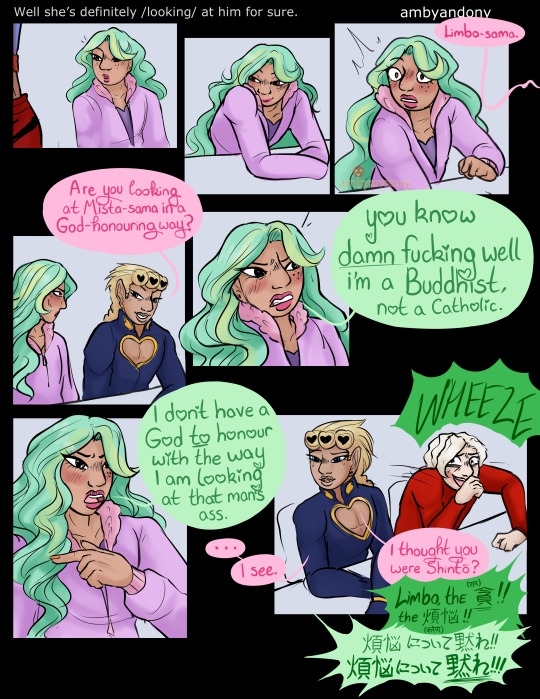
loosely based on actual rp lmaoooo
inside joke i thought the public would get a kick out of.
believe it or not giorno has asked limbo this question multiple times
[Transcript:
Giorno: Limbo-sama.
Giorno: Are you looking at Mista-sama in a God-honouring way?
Limbo: you know damn fucking well i'm a Buddhist, not a Catholic.
Limbo: I don't have a God to honour with the way I am looking at that man's ass.
Giorno: ...
Giorno: I see.
Fugo: (WHEEZE)
Giorno: I thought you were Shintō?
Fugo: Limbo, the 貪 (राग) !! The 煩悩 (क्लेश)!!*
Limbo: 煩悩について黙れ!!!煩悩について黙れ!!!**
* 貪 (Ton, Japanese equivalent of राग rāga: a Buddhist and Hindu term representing a character poison which encompasses any lust, greed and attachment to a sensory object); 煩悩 (bonnō, Japanese equivalent of क्लेश kleśa or Kleshas: Buddhist term for 'poisons' that afflict the soul and result in 'unwholesome actions', translated in many ways including 'worldly desires' and 'poisons');
* Sentence roughly translates to "Limbo, the craving!! The worldly desires!!"
** "SHUT UP ABOUT MY WORLDLY DESIRES! SHUT UP ABOUT MY WORLDLY DESIRES!!!"
End Transcript]
Giorno's like 'wait i thought you were shintō..?? you have a home shrine" (she's both) and Fugo's like "LUST IS A WORLDLY DESIRE LIMBO. BUDDHISTS ARE SUPPOSED TO LET GO OF WORLDLY DESIRES LIMBO."
fugo usually tries to keep a straight face but like imagine the shyest most modest girl u know is just outright like yeah i was looking at his ass. like half the time this girl wont even say "fuck" without apologising bc of her anxiety and she just goes and says this. that's fucking hilarious
#Limbo Adkins#fan character#jjba#vento aureo#Cloud Nine Contrails#shitposting#pannacotta fugo#giorno giovanna#amby draws#my art#memecomic#C9C#jjba oc#jojo oc
12 notes
·
View notes